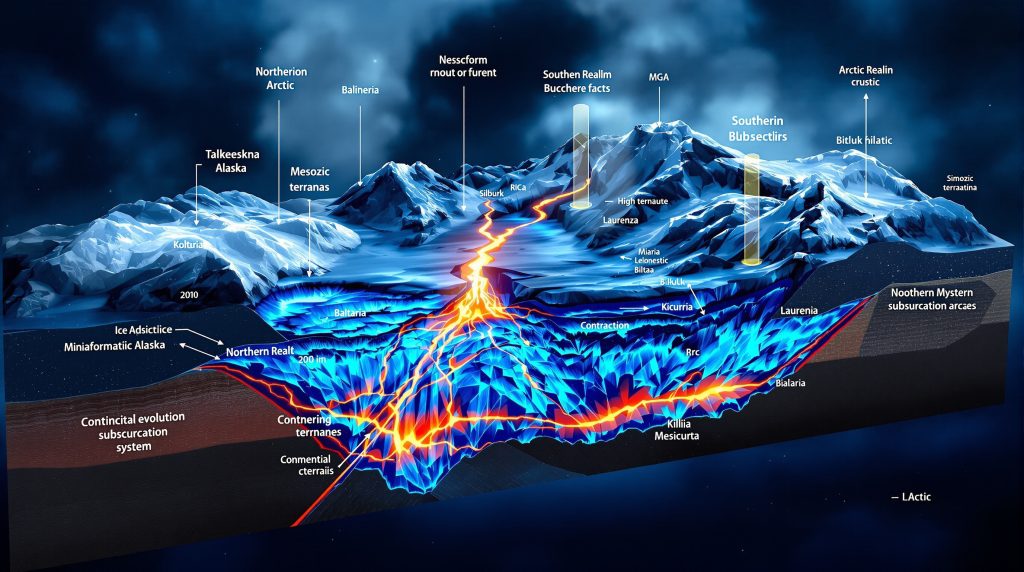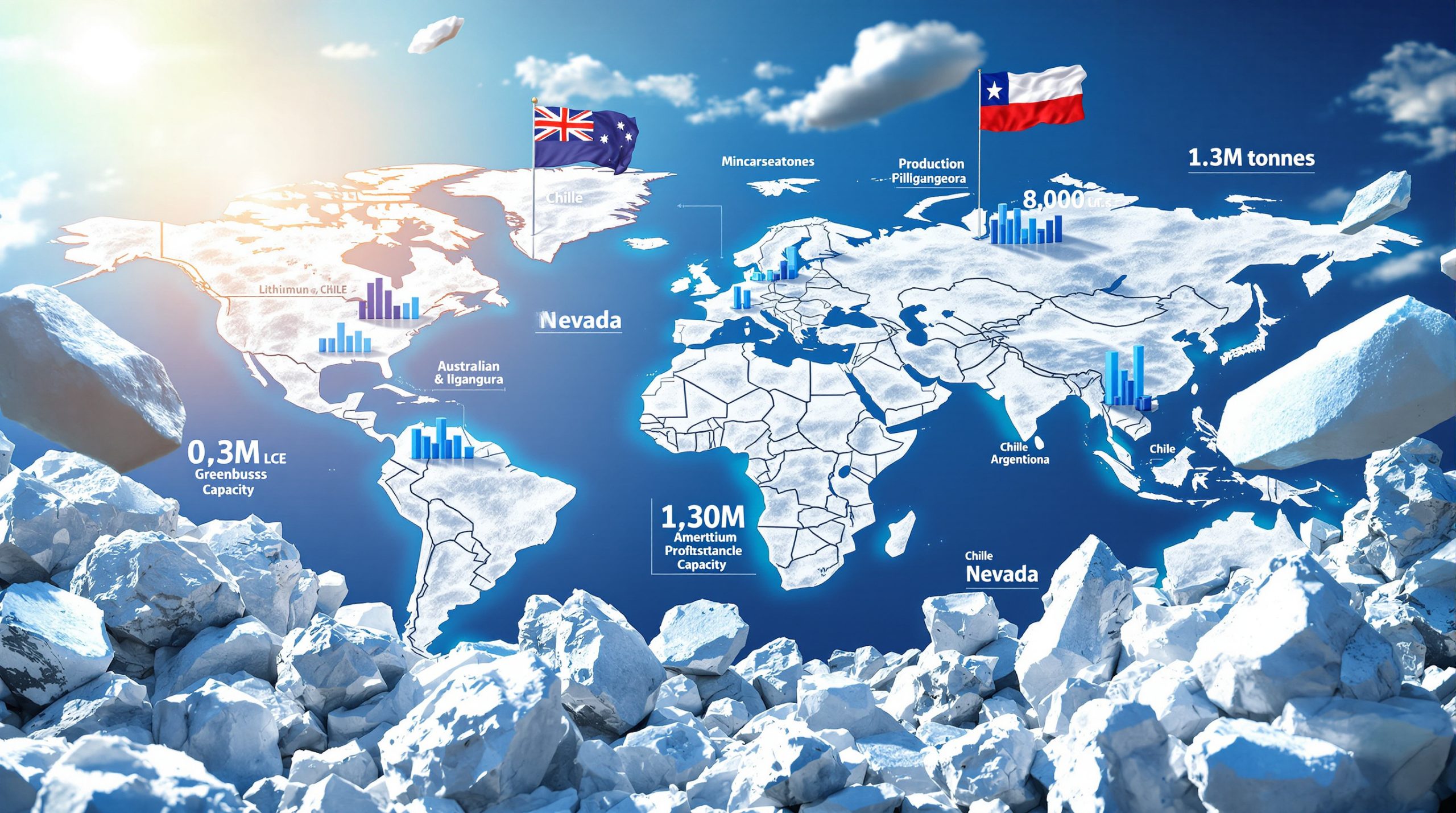Complex Tectonic Evolution and Significance
Arctic realm subduction zones represent a fascinating chapter in Earth's tectonic history, featuring intricate interactions between multiple terranes and ocean basins during the Mesozoic era. These features have profoundly shaped the northern circumpolar region. Understanding these ancient processes provides critical insights into continental growth and modern Arctic evolution.
In addition, continental fragments converged between Siberia, Baltica, and northern Laurentia during the Late Paleozoic era. Clusters of landmasses from roughly 375 to 325 million years ago set the stage for multiple convergent systems. Furthermore, the dispersal of these terranes led to the development of distinct subduction systems along the northern margin.
Some terranes, such as those in Arctic Alaska, remained close to the margin, whereas others—including Wrangellia and Alexander—migrated deeper into the Panthalassa Ocean. Consequently, these differential motions allowed for varied tectonic processes. For instance, modern mapping techniques, including drill results interpretation, help decipher these concealed structures.
Formation Through Continental Convergence
Early on, the scattering and translation of terranes created the conditions for convergent tectonics. In addition, geophysical surveys indicate the presence of distinct magnetic anomalies that help trace ancient boundaries. Moreover, researchers have applied geological logging codes to decode the complex history recorded in rock units.
During the Late Paleozoic, the arrangement of terranes produced initial subduction systems. Consequently, remnant fragments from these tectonic episodes continue to influence the northern margin’s architecture today. In parallel, integrated approaches with mineral deposit tiers guide resources offer valuable insights into the economic implications of these processes.
Island Arc Development and Early Subduction Patterns
The earliest subduction configurations led to the formation of island arc systems along migrating terrane margins. As oceanic crust subsided beneath continental fragments, island arcs emerged. Furthermore, evidence from Triassic to Early Jurassic rocks illustrates these subtle beginnings.
For example, in southern Alaska, oceanic crust subduction beneath insular terranes produced the Talkeetna arc, while in northern Alaska an opposite polarity emerged. This reversal led to continental margin material subducting beneath oceanic island arcs, such as the Koyuk arc system. However, these contrasting subduction styles necessitated major transform boundaries to accommodate opposing motions.
Modern magnetic anomaly mapping, coupled with techniques like 3D geological modelling, has provided fresh insights into these distributed arc systems. Seismic imaging further aids our interpretation of the subduction geometry.
Definitive Evidence in Metamorphic Rocks
Compelling evidence for ancient convergent processes comes from metamorphic rocks. Blueschist and eclogite facies rocks form only under high-pressure, low-temperature conditions typical of subduction settings. Hence, they serve as natural markers for these tectonic processes.
In northern Alaska, extensive blueschist belts extend for hundreds of kilometres. These formations indicate that continental crust was subducted beneath younger oceanic arcs. Conversely, blueschists in southern Alaska formed along the backstop of the Talkeetna arc, indicating a more conventional subduction environment. In addition, downhole geophysics has proven invaluable in locating these metamorphic records.
Radiometric dating of metamorphic minerals from these belts yields critical age constraints. Western Arctic blueschists date to around 170 million years (Middle Jurassic), while those from the Ruby terrane are about 145 million years old (Late Jurassic). Additionally, younger blueschists in the Northwest Brooks Range are dated at circa 120 million years (Early Cretaceous).
This temporal progression suggests either a prolonged subduction process lasting over 50 million years or distinct subduction episodes along various segments of the margin. Consequently, these age estimates are central to understanding the evolution from subduction to collision.
Opposing Subduction Directions: A Tectonic Puzzle
One of the most intriguing aspects of these ancient subduction systems is the presence of contrasting polarities between different margin segments. These opposing directions demanded major transform boundaries to accommodate the geometrically incompatible processes.
Southern Alaska's Conventional Pattern
In southern Alaska, subduction followed a conventional pattern. Specifically, oceanic crust slid beneath insular terranes like Wrangellia and Alexander, forming the Talkeetna arc. Early Jurassic blueschists developed in the corresponding accretionary complex.
Geochemical analyses reveal that the Talkeetna arc was a primitive oceanic system with minimal continental input. This subduction persisted from the Triassic through Early Cretaceous times. Furthermore, ongoing research employing plate tectonics research has refined our understanding of these gradual processes.
Northern Alaska's Reversed Polarity
In stark contrast, northern Alaska exhibits a reverse subduction polarity. Here, continental margin material was forced beneath oceanic island arcs, resulting in the formation of the Koyuk arc. This atypical configuration is rare in global tectonics and led to widespread blueschist formation on continental crust rather than oceanic lithologies.
Distinctive protoliths within these blueschists bear evidence of sedimentary and igneous rocks from a continental setting. Moreover, the subduction of these buoyant materials likely required unique tectonic conditions and strong compressional forces.
Transform Boundaries as Critical Junctures
The need to reconcile such opposing subduction directions led to the development of major transform fault systems. Studies indicate that a sinistral (left-lateral) transform fault separated the northern and southern domains. Evidence of this boundary comes from the abrupt truncation of blueschist belts along the fault zones.
Later, dextral (right-lateral) strike-slip faults further modified the region during subsequent collision stages. These transform interactions underscore the intricate geodynamic evolution that ultimately shaped the margin.
From Subduction to Continental Collision
The tectonic evolution shifted when subduction gave way to collision. This transition is recorded in several geological indicators that help constrain both its timing and nature.
Key evidence includes blueschist thrust sheets beneath the forearc of the Koyuk arc and a distinct shift in arc magmatic chemistry. As continental material entered the subduction system, foreland basin development became increasingly apparent. This basin formation resulted from the flexure of continental crust under the weight of thrust sheets.
Between 140 and 130 million years ago, the region experienced widespread collision. Concurrently, thrust belts emerged in the Brooks Range and foreland basins formed in northern Alaska. In addition, dextral strike-slip faulting allowed some terrane segments to evade the full impacts of collision, thereby preserving a record of these dynamic processes.
Mid-Cretaceous Tectonic Convergence
By the mid-Cretaceous period (around 100 million years ago), convergence was evident throughout the region. Researchers have identified several key features:
• Thrust belts in the Brooks Range
• Foreland basins across northern Alaska
• Synchronous timing of collision in both Alaska and Canada
• Strike-slip faulting accommodating local variations
The integration of these observations provides a coherent picture of the region’s tectonic evolution. Notably, the evidence here also ties into the broader context of Arctic realm subduction zones.
Transform Faults: Key Players in Tectonic Evolution
Transform faults played a pivotal role by accommodating the contrasting subduction polarities, thereby allowing otherwise incompatible terrane motions.
The Sinistral Transform Model
The sinistral transform model accounts for a number of key regional features. These include the abrupt truncation of blueschist belts and the isolation of tectonically distinct terranes. Moreover, the transform boundary is linked to the opening of the Canada Basin in the Arctic Ocean.
Additional evidence suggests that these faults originated during the breakup of Pangea. Their role in facilitating oblique rifting and subsequent short-lived transform motion is now well documented.
Crucial Ties to Arctic Ocean Formation
Transform faults are also key to understanding Arctic Ocean evolution. Studies have identified that:
• The opening of the Canada Basin occurred around 140–120 million years ago
• Seafloor spreading initiated along these transform margins
• Oblique rifting took place between northern Alaska and Siberia
• Subsequent dextral faulting further modified the basin margins
Such insights are guided by both gravity and seismic imaging techniques, which together reveal a complex three-dimensional crustal architecture.
Geophysical Insights into Deep Structure
Modern geophysical methods have vastly enhanced our grasp of deep tectonic structures. Techniques such as magnetic anomaly mapping, gravity surveys, and seismic imaging provide critical subsurface information.
Magnetic signatures can trace buried terranes far beyond visible rock exposures. For example, they help identify truncated magnetic features that correspond to known fault zones. Additionally, gravitational data reveal density contrasts that highlight suture zones between accreted terranes.
Seismic imaging further delineates crustal-scale structures related to ancient subduction. These methods collectively contribute to a more comprehensive tectonic model.
Moreover, integrating methods like 3D geological modelling with conventional approaches has opened up a new frontier in subsurface interpretation. Researchers now routinely combine gravity, magnetic, and seismic data to unravel these deep-seated structures.
Key Takeaways About Arctic Realm Subduction Zones
Arctic realm subduction zones remain a critical focus for understanding both regional and global tectonic evolution.
Key findings include:
• The origin of terranes from Siberia, Baltica, and northern Laurentia during the Paleozoic
• The scattering of these terranes into the Panthalassa realm
• Contrasting subduction polarities between northern and southern Alaska
• Extensive blueschist formation that records ancient subduction events
• A transition from subduction to collision between 140–130 million years ago
• The major role of transform faults in reconciling opposing tectonic regimes
These bullet points underscore the complexity of ancient subduction processes. They also provide a framework for interpreting modern tectonic interactions around the world.
Implications for Global Tectonic Models
Understanding these ancient processes offers vital insights for broader tectonic theory. For instance, the evidence gathered in this region demonstrates the significance of three-dimensional plate interactions.
Moreover, the interplay of subduction, transform faulting, and collision illustrates the dynamic processes that continue to shape our planet. In addition, the refined model of terrane accretion contributes to our overall view of continental growth. It is important to note that studies of Arctic realm subduction zones influence modern models of plate tectonics worldwide.
Future research will undoubtedly refine these models further. Researchers are now using advanced analytical techniques to expand our understanding of these ancient systems.
Concluding Thoughts
In summary, Arctic realm subduction zones offer a remarkable natural laboratory for studying complex tectonic evolution. This region has served to highlight the interplay between subduction, collision, and transform faulting. Furthermore, it provides a critical analogue for modern subduction systems.
Future studies of Arctic realm subduction zones promise to reveal additional insights into both local and global tectonic processes. As geophysical and geochemical methods evolve, our comprehension of these ancient systems will continue to improve. Ultimately, the lessons gleaned from this region help to contextualise the dynamic history of Earth’s lithosphere.
Looking for the Next Major Mineral Discovery?
Discovery Alert's proprietary Discovery IQ model instantly notifies investors of significant ASX mineral discoveries, transforming complex tectonic and geological data into actionable investment insights. Visit the discoveries page to understand how major mineral discoveries like those in complex geological settings can deliver substantial returns.




